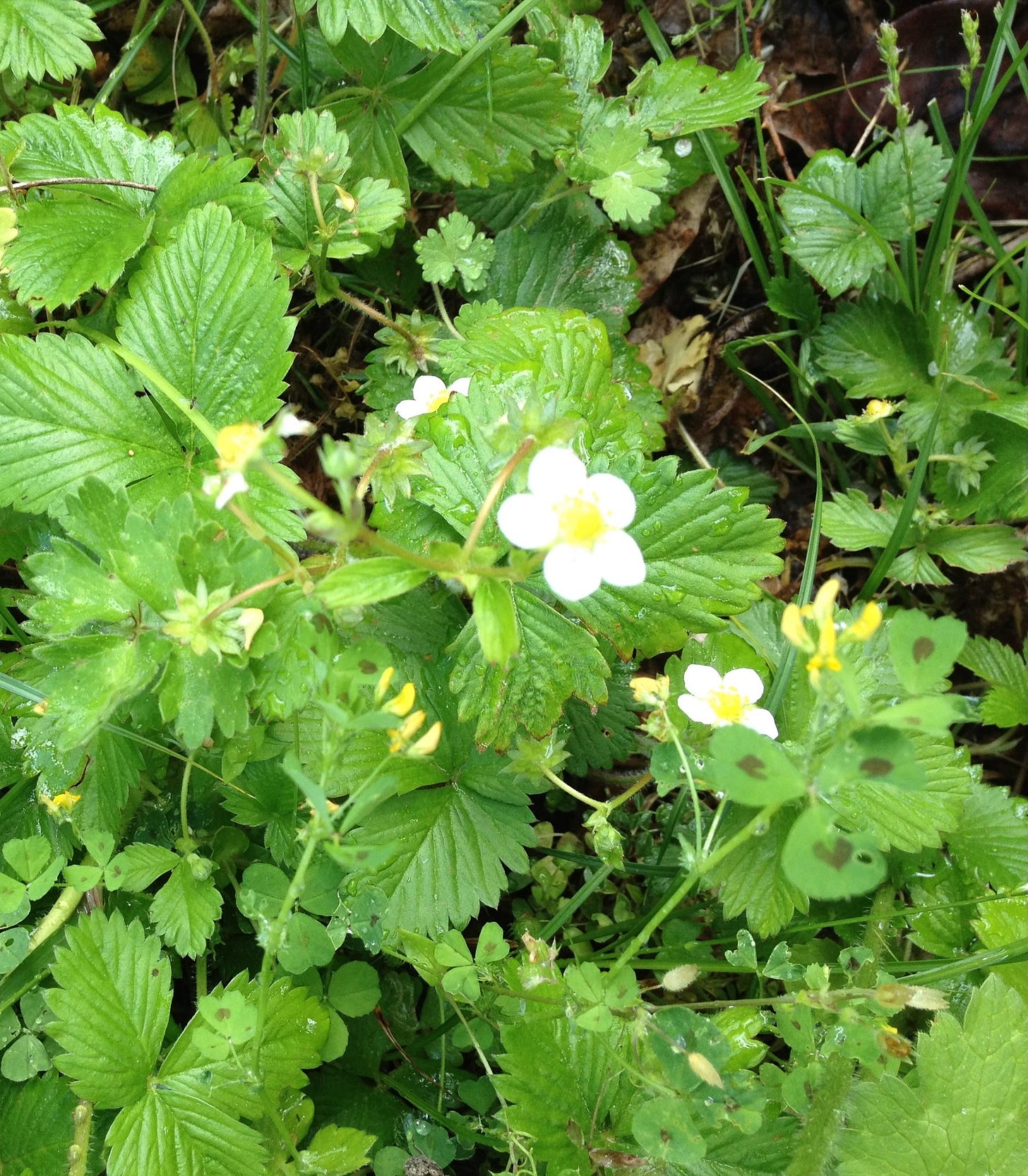And Just Like That. . .
Thoughts on the season, the Med diet (again? yes!) and an Italian recipe for carrot-almond cake
And just like that, it’s June. It happens every year somehow but it never ceases to amaze me. We’ve gone through the weeds, the dandelion greens, the ramps, the fiddleheads, and we’re deep now in a forest of asparagus, with strawberries and peas lurking just over the horizon. The tourists are back, ready to empty their wallets for our carefully crafted tee shirts and balsam-scented pillows, lobster boats are out in the bay, setting traps for proliferating lobsters, the sun is high, the grass is green, the water is almost warm enough for a swim (in the lake, not the ocean). June is the blessing Maine offers, an annual reward for March. Enjoy it while you can—it’s fleeting, ephemeral, and all the more precious for being so rare.
The cowslip startles in meadows green,
The buttercup catches the sun in its chalice,
And there‘s never a leaf or a blade too mean
To be some happy creature’s palace.
More, again, on the Mediterranean Diet
Springing into summer, there’s never a better time to adopt the Mediterranean Diet. Think fresh and local, think vegetables, think olive oil on everything from salad to grilled seafood, think rhubarb and strawberries, peaches and cherries, and you’ll be thinking Mediterranean. And the evidence keeps on growing. My friend Ruth just sent me this article from the Harvard Gazette, the official news website for Harvard University:
Women who follow Mediterranean diet live longer
“In a study that followed more than 25,000 U.S. women for up to 25 years, researchers from Harvard-affiliated Brigham and Women’s Hospital found that participants who closely followed the Mediterranean diet had up to a 23 percent lower risk of all-cause mortality, with benefits for both cancer and cardiovascular health. The researchers found evidence of biological changes that may help explain the longevity gains. Results are published in JAMA.”
This is heartening news, for sure, although I’m not certain that I trust the statistics. I mean, “25% lower risk of all-cause mortality”—don’t we all die in the end? And 25% of what, or of whom?
Nonetheless, it seem irrefutable that the Mediterranean diet brings good health benefits, and not just for women. But that leads me once again to the question of what exactly is the Mediterranean Diet and how does it relate to Mediterranean cuisines? I’m often asked that question, at least in part because of my background. Over the years that I’ve lived, worked, traveled, shopped, cooked, and raised my children all across the Mediterranean world, I’ve learned a lot about how, why, and what people eat around the Inner Sea. (For evidence check out The New Mediterranean Diet Cookbook, an update of my original Mediterranean Diet Cookbook, first published in the 1990’s).
So what is the famous diet? The answer is not complicated. Any knowledgeable doctor, cardiologist, nutritionist, healthy diet consultant, or your very own grandmother will offer the same advice:
Lots of fresh or freshly frozen vegetables (from artichokes to zucchini and everything in between, including especially leafy greens)
Lots of legumes (lentils, beans, peas, chickpeas/garbanzos, etc.)
Plenty of unrefined grains, both as whole grains and as flour for breads or pasta (wheat, farro/emmer, semolina, bulgur, freekeh, plus rye, barley and rice)
More fish than meat (try this: two nights of seafood, one night of red meat, the rest of the week chicken, eggs, or vegetables for protein)
Most important of all, most significant to the diet: olive oil (extra-virgin) as the principal fat, using a cheaper olive oil for cooking, a more expensive one for garnishing.
That’s all. Add a glass or two of wine, if you wish; add a little dairy, especially cheese and yogurt; make your dessert primarily from fresh fruit, and you’ve got it.
But the most important advice may be the most difficult to follow:
Stay away from highly processed foods, including (but not limited to) packaged snacks, chips, crackers, cookies, cakes; sweetened soft drinks, including canned coffee, tea, and soda; almost all breakfast cereals (check the sugar content); candy; and fast foods and frozen meals. This is what your mother called junk food, empty calories, full of seductive flavors and textures, but also full of salt, sugar, fat, and industrial chemicals.
Sorry, the remainder of this post is only available to paid subscribers.
Keep reading with a 7-day free trial
Subscribe to On the Kitchen Porch to keep reading this post and get 7 days of free access to the full post archives.




